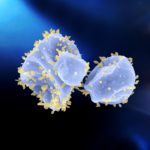Link to Pubmed [PMID] – 36097140
Link to DOI – 10.1111/1462-2920.16207
Environ Microbiol 2023 Jan; 25(1): 40-44
Viruses are considered to be the most abundant biological entities on earth. They also display striking genetic diversity as emphatically demonstrated by the recent advances of metagenomics and metatranscriptomics. But what are the limits of this diversity, that is, how many virus species in the earth virome? By combining the available estimates of the number of prokaryote species with those of the virome size, we obtain back-of-the-envelope estimates of the total number of distinct virus species, which come out astronomically large, from about 107 to about 109 . The route of virus origins apparently involved non-viral replicators capturing and exapting various cellular proteins to become virus capsid subunits. How many times in the history of life has this happened? In other words, how many realms of viruses, the highest rank taxa that are supposed to be monophyletic, comprise the global virome? We argue that viruses emerged on a number (even if far from astronomical) independent occasions, so the number of realms will considerably increase from the current 6, by splitting some of the current realms, giving the realm status to some of the currently unclassified groups of viruses and discovery of new distinct groups.


